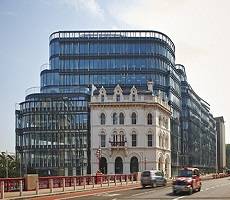July 7, 2014
CIPD publishes manifesto on how next Government could shape future of work
 A sustainable recovery and successful future economic performance depends on future governments adopting policies that address fundamental skills and productivity issues, as well as looking at other agendas which will actively shape the future of work. This is according to the CIPD ‘Manifesto for Work,’ published today, which calls on the UK’s political parties to focus on the key issues facing employers and the workforce in the run up to the General Election 2015. Amongst a set of proposals, the HR body is calling on the Government to take a “good practice” approach to employment regulation and policy by supporting the creation of a Workplace Commission, with the aim of helping employers raise standards of people management. CIPD chief executive Peter Cheese, says a better focus and understanding of the changing nature of work, the requirements and needs of the workforce, and the changing workplace will be needed to meet the future challenges. (more…)
A sustainable recovery and successful future economic performance depends on future governments adopting policies that address fundamental skills and productivity issues, as well as looking at other agendas which will actively shape the future of work. This is according to the CIPD ‘Manifesto for Work,’ published today, which calls on the UK’s political parties to focus on the key issues facing employers and the workforce in the run up to the General Election 2015. Amongst a set of proposals, the HR body is calling on the Government to take a “good practice” approach to employment regulation and policy by supporting the creation of a Workplace Commission, with the aim of helping employers raise standards of people management. CIPD chief executive Peter Cheese, says a better focus and understanding of the changing nature of work, the requirements and needs of the workforce, and the changing workplace will be needed to meet the future challenges. (more…)























July 15, 2014
Book Review: Cubed: A Secret History of the Workplace by Nikil Saval
by Colin Watson • Comment, Furniture, Work&Place, Workplace design
Cubed: A Secret History of the Workplace
Nikil Saval’s book Cubed: A Secret History of the Workplace pulls off that rare feat for a parochial business book of being intelligent and informed (which many are) as well as fascinating, entertaining and realistic, which is rather less commonplace. He pulls this off with plenty of references to pop culture including television series such as Will and Grace, films such as Office Space and The Apartment and, inevitably, the Dilbert cartoons. There is also a great deal of enjoyment to be had in the slightly jaded tone of his writing and brutal evisceration of the likes of Tom Peters who is singled out for special criticism. So too, his take on the very idea of the ‘Office of the Future’ with its slides, basketball courts, pool tables and vivid colours.
(more…)